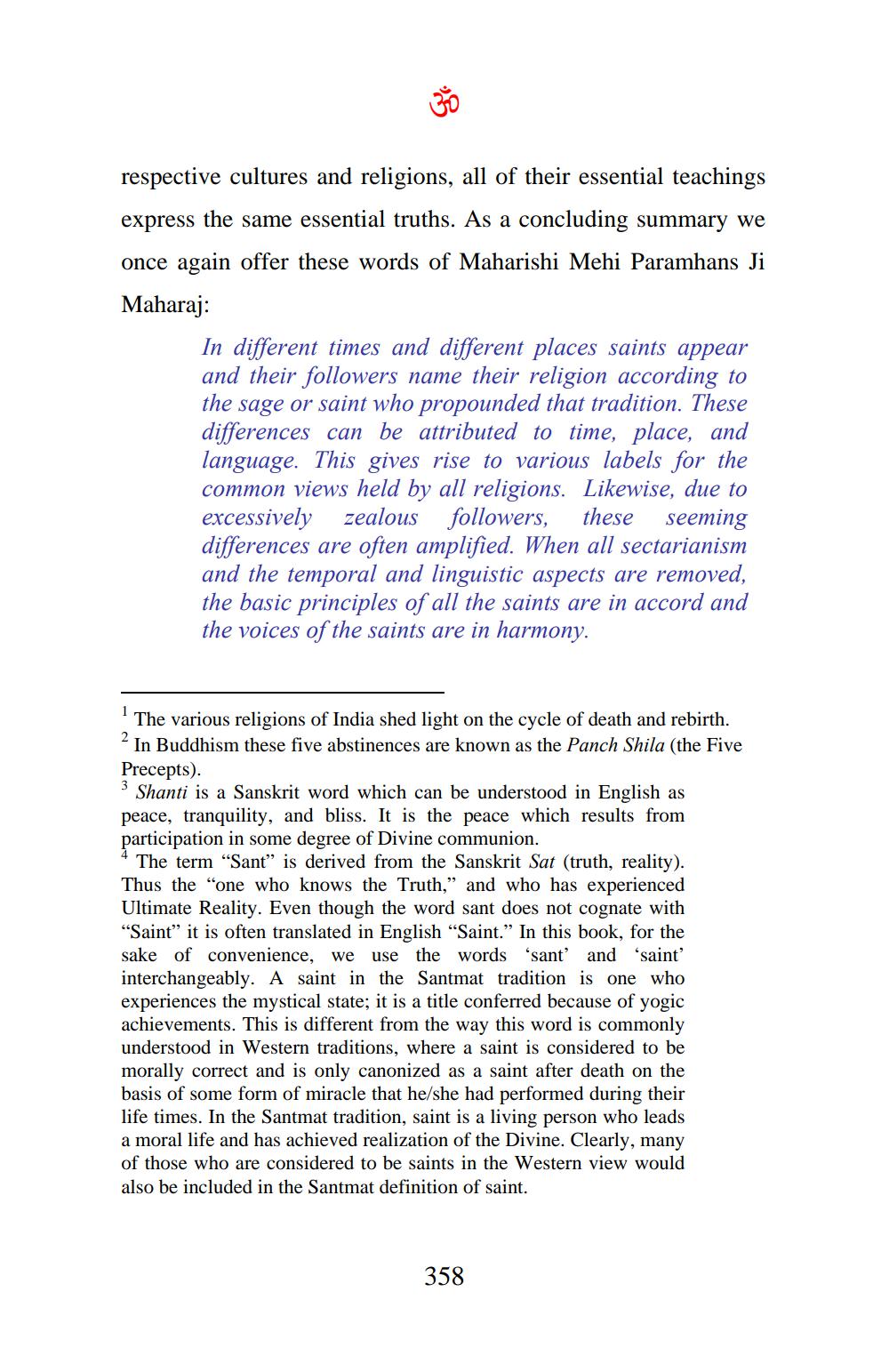________________
respective cultures and religions, all of their essential teachings express the same essential truths. As a concluding summary we once again offer these words of Maharishi Mehi Paramhans Ji Maharaj:
In different times and different places saints appear and their followers name their religion according to the sage or saint who propounded that tradition. These differences can be attributed to time, place, and language. This gives rise to various labels for the common views held by all religions. Likewise, due to excessively zealous followers, these seeming differences are often amplified. When all sectarianism and the temporal and linguistic aspects are removed, the basic principles of all the saints are in accord and the voices of the saints are in harmony.
The various religions of India shed light on the cycle of death and rebirth. - In Buddhism these five abstinences are known as the Panch Shila (the Five Precepts). 3 Shanti is a Sanskrit word which can be understood in English as peace, tranquility, and bliss. It is the peace which results from participation in some degree of Divine communion. 4 The term “Sant” is derived from the Sanskrit Sat (truth, reality). Thus the "one who knows the Truth,” and who has experienced Ultimate Reality. Even though the word sant does not cognate with "Saint” it is often translated in English "Saint.” In this book, for the sake of convenience, we use the words 'sant' and 'saint' interchangeably. A saint in the Santmat tradition is one who experiences the mystical state; it is a title conferred because of yogic achievements. This is different from the way this word is commonly understood in Western traditions, where a saint is considered to be morally correct and is only canonized as a saint after death on the basis of some form of miracle that he/she had performed during their life times. In the Santmat tradition, saint is a living person who leads a moral life and has achieved realization of the Divine. Clearly, many of those who are considered to be saints in the Western view would also be included in the Santmat definition of saint.
358




